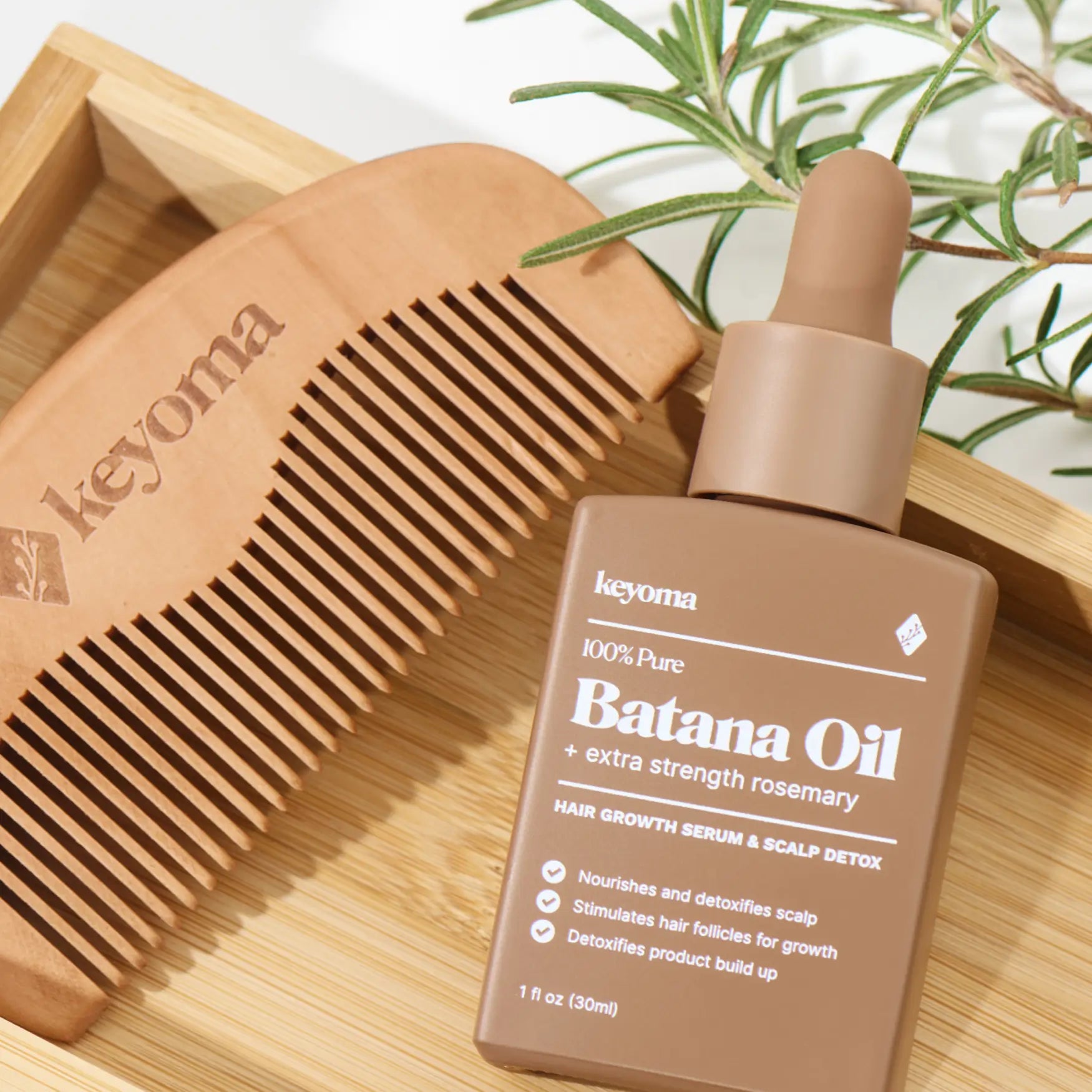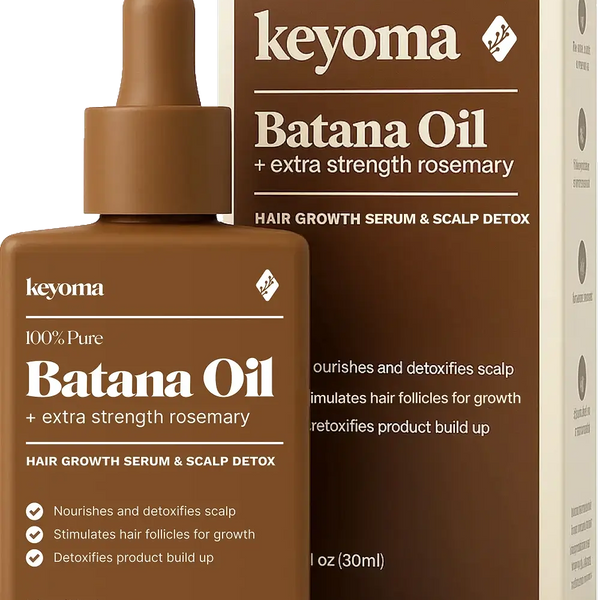In this article
Long hair can read relaxed and cool, yet caring for it usually takes more planning than short cuts. Breakage, frizz, split ends, extra bulk, and weak styling habits can all work against that easy, great-looking finish.
To keep growing hair soft, healthy, and good-looking as the length increases, you may need to pick up new care and styling skills. Below are practical long hair tips for men.
Key Takeaways
-
Hair grows about half an inch monthly, reaching shoulder length usually takes two years.
-
Early male pattern baldness requires prompt treatment.
-
Avoid high-tension styles, tight pulling can cause traction alopecia and permanent thinning.
-
Wash based on scalp oiliness, condition ends, get trims every three to four months.
Men's Hair Growth Cycle
Before talking about how to make your hair grow faster men and hair growth acceleration, it helps to cover the basics of growth. Hair moves through repeating phases of growth, rest, and shedding. The anagen (growth) phase is the one to support, since hair is actively lengthening there.
On average, men’s hair grows at about half an inch (1.25 cm) per month. This means you can expect around 0.012 inches (0.03 cm) of growth per day. Keep in mind that individual factors, such as genetics and overall health, play a role in this rate.

Tips for Men Growing Out Their Hair
Patience gets you to length, but progress comes from small choices that reduce wear as you go. Keep growth looking intentional by planning maintenance, not big chops. A simple rule is to book light trims every three to four months to manage split ends while you grow. Put smarter grow-out habits to work.
Watch for Early Signs of Male Pattern Baldness
Stay alert to early clues of male pattern baldness when you’re growing your hair long. Typical first signs include any clear change to your hairline, thinning on the crown, or shedding that seems heavy. Strands may become wispy, which often signals thinning.It’s normal to lose 50 to 100 hairs daily, but more than that may indicate the start of balding.
If You Notice Hair Loss, Treat It Early
When you spot early hair loss, act quickly to limit further damage. Male pattern baldness, the most common type in men, is driven by a hormone called dihydrotestosterone (DHT).
If you’re genetically sensitive, DHT can bind to scalp receptors and gradually reduce new hair production. It may begin slowly, then speed up over time as DHT affects more follicles, so starting treatment at the first signs is best.
Discover natural DHT blockers you can try.
Strengthen Long Hair With Antioxidant Oil
I recommend Keyoma Batana Oil with Rosemary when you want longer, stronger hair without losing lift. Batana oil from Elaeis oleifera is naturally rich in carotenoids and vitamin E tocotrienols, a profile linked to scalp and fiber support.
Lightweight plant oils that can penetrate the strand help cut protein loss and friction, so hair keeps its length instead of snapping. The rosemary note brings early clinical support for a denser look at six months, which is why I like this pick for a long-game routine.
Rethink High-Tension Hairstyles
Planning to grow enough length for braids, dreadlocks, or a man bun? Consider the tradeoffs. Styles that pull tightly at the roots can contribute to traction alopecia, a hair loss caused by ongoing tension.
Constant pulling may loosen hairs from the follicle and, over time, create scarring that stops new growth. Cornrows and tight ponytails fall into this group too. The best prevention is avoiding high-tension looks altogether.
If you do choose a pulled-back style, lower the risk by keeping it as loose and gentle as you can.
Use Caution When Coloring Your Hair
Once hair extends past your chin, even a bit of gray stands out more. Some men like the silver, others prefer a full-color look, so you might decide to colour when grays multiply. Dyeing isn’t always harmful, but it calls for caution when you’re trying to grow length.
Keep these tips in mind when colouring your hair:
-
Stay “in the shade” with your colour. You’ll usually see the best results by choosing a hue within three shades of your natural color.
-
Shield coloured hair from sun exposure. A leave-in with zinc oxide helps, and a hat protects against UV that can fade color or make it brittle.
-
Give hair extra recovery time in winter. Aim to colour every eight to 10 weeks during colder months to limit damage.
Handle Your Hair Gently
The kinder you are to your hair, the better it tends to look and feel. Skip myths like brushing a hundred strokes a day, and avoid tugging during styling.
After washing, let it air-dry or use a dryer on the lowest setting. I found a low, cool setting that reduced frizz and breakage for me. Try not to rub roughly with a towel, since that can ruffle the cuticle and irritate the scalp.
If you pull hair back, use proper ties instead of rubber bands, which snag and cause breakage. This applies to every texture. Choose products that match your hair type.
Consider Hair Supplements for Support
Beyond careful handling, styling, and cleansing, you can look at inside-out support. Eating more nutrient-dense foods never hurts, and some people explore hair vitamins or supplements to help the process along.
Schedule Occasional Trims
Growing your hair doesn’t mean cutting out your barber. You don’t want big chops while gaining length, but regular maintenance trims keep everything tidy during the grow-out.
Try to visit your barber every three to four months for light trims, and be clear that you’re growing out your hair. They can clean up uneven areas that aren’t laying well.
Though trimming may feel backward, removing a little length now and then helps manage split ends and keeps hair looking healthy.
Wash at the Right Frequency
Good care matters at every length, and it becomes crucial as hair gets long. Keep it simple by washing based on how oily your scalp feels.
According to the American Academy of Dermatology, the oilier your hair and scalp are, the more important it is to wash frequently. If your scalp feels dry, you may only need to cleanse every few days or once each week.
Ignore strict wash schedules; shampoo only when it seems necessary or hair feels dirty. Use your judgment, and treat “rules” about frequency as flexible guides rather than hard laws.
Be Careful When Shampooing
Technique matters when you shampoo. Pick a formula without harsh chemicals, and focus on cleansing the scalp instead of scrubbing the lengths. That controls oil without roughing up the hair. After cleansing, direct the conditioner to the ends, which usually need the most moisture. Applying it at the roots can make hair look and feel greasy sooner.
Protect Your Hair From Common Damage
As hair gets longer, it’s even more important to guard against common damage. Watch out for pool water, sea salt, hot blow-drying, and aggressive heat tools. Avoid very high heat, too much sun, and overly harsh styling products that irritate skin or strain roots. I switch to a hat and a UV spray on beach days.
These small changes reduce wear and tear on longer strands. Chlorine is another frequent culprit, used in pools to control bacteria. To protect hair while swimming, wear a cap and rinse with fresh water as soon as you get out. If you swim often, look for a swimmer’s shampoo that removes chlorine buildup.
What Should A Man With Long Hair Expect
Basics in place, it’s time to widen your view. Beyond styling changes, small shifts in diet and care can reinforce fragile strands. For example, iron helps carry oxygen to hair follicles, which supports growth and repair. You can add these while keeping heat and chemicals low. Add supporting factors now.

Expect an Awkward Phase
Most people hit an awkward stage during the transition from short to long hair. It often happens when bangs reach an in-between length or the overall shape is neither short nor truly long. Decide how you’ll handle this short-lived phase, whether that’s pinning hair back, wearing hats, or just riding it out.
Plan to Invest in New Products
Products that worked for short styles often don’t translate to longer hair. Gels, pomades, and clays add texture and hold to cropped cuts but are less helpful once hair grows out.
Shift toward options that detangle, hydrate, add shine, and control frizz, like a leave-in cream or deep-conditioning mask. Thickening shampoo and conditioner can also help keep hair feeling strong and full at any length.
Stay Focused on Your Goal
This is evergreen advice for most goals, including growing your hair. The process takes patience, and timelines vary by person.
Studies suggest that the hair on your head grows about six inches a year. Hair has to be 12 to 14 inches in length to reach your shoulders.
So if you’re starting with a super-short buzz cut, for example, you’ll need about two years of consistent growth to have shoulder-length hair, or roughly 18 months for chin-length hair.
Start Your Long Hair Routine This Week With Keyoma
Long hair hurts when stress stacks in the same spots. Set a daily tension budget and spend it wisely. Keep tight pulls rare, move your part, and wash only when your scalp feels oily so roots stay calm. Book light trims every three to four months to stop splits from climbing.
Protect from chlorine and hard sun on high exposure days. If you feel scalp tenderness or see band dents by midday, then loosen the style, shift the anchor point, and drop heat for the rest of the day. These choices cut breakage and help you clear the awkward stage without quitting.
Featured Product
100% Pure Batana Oil + Rosemary









